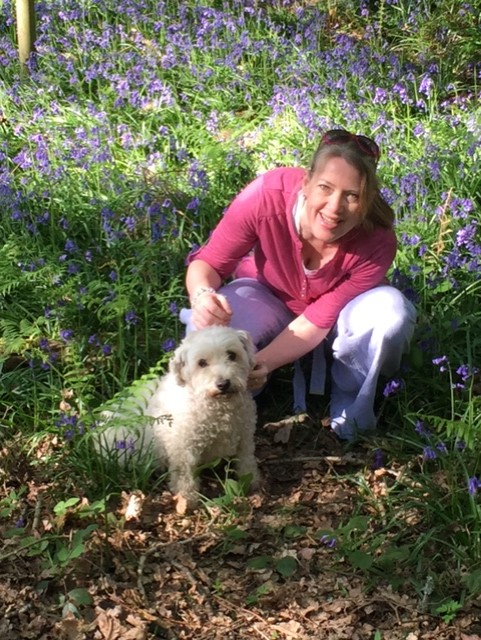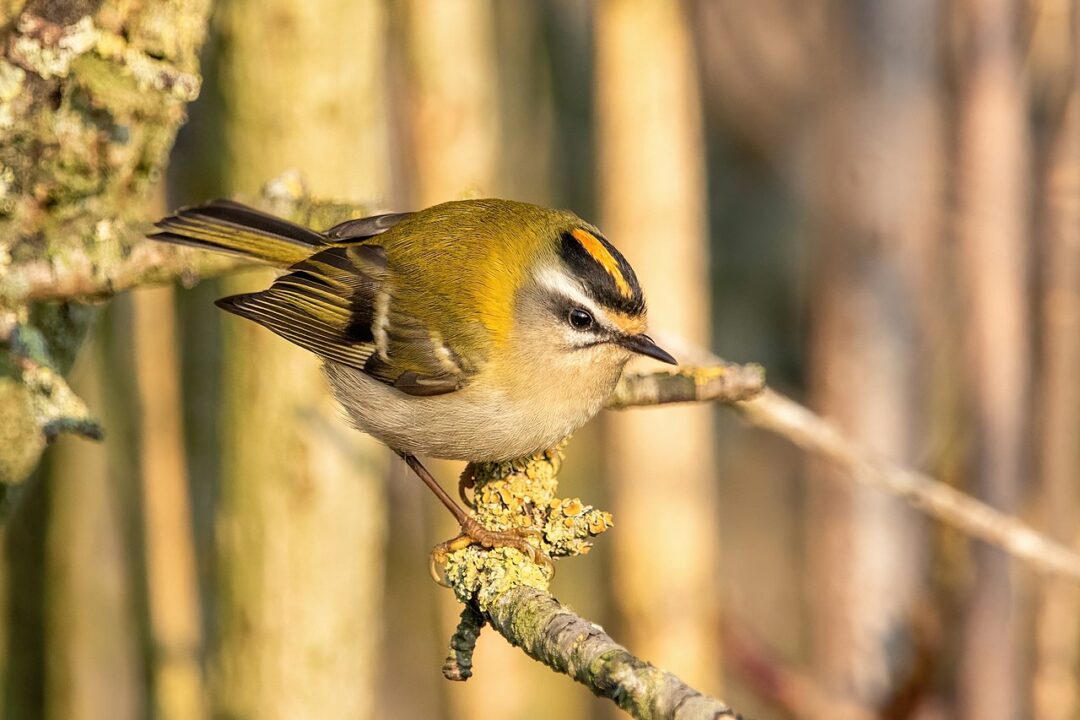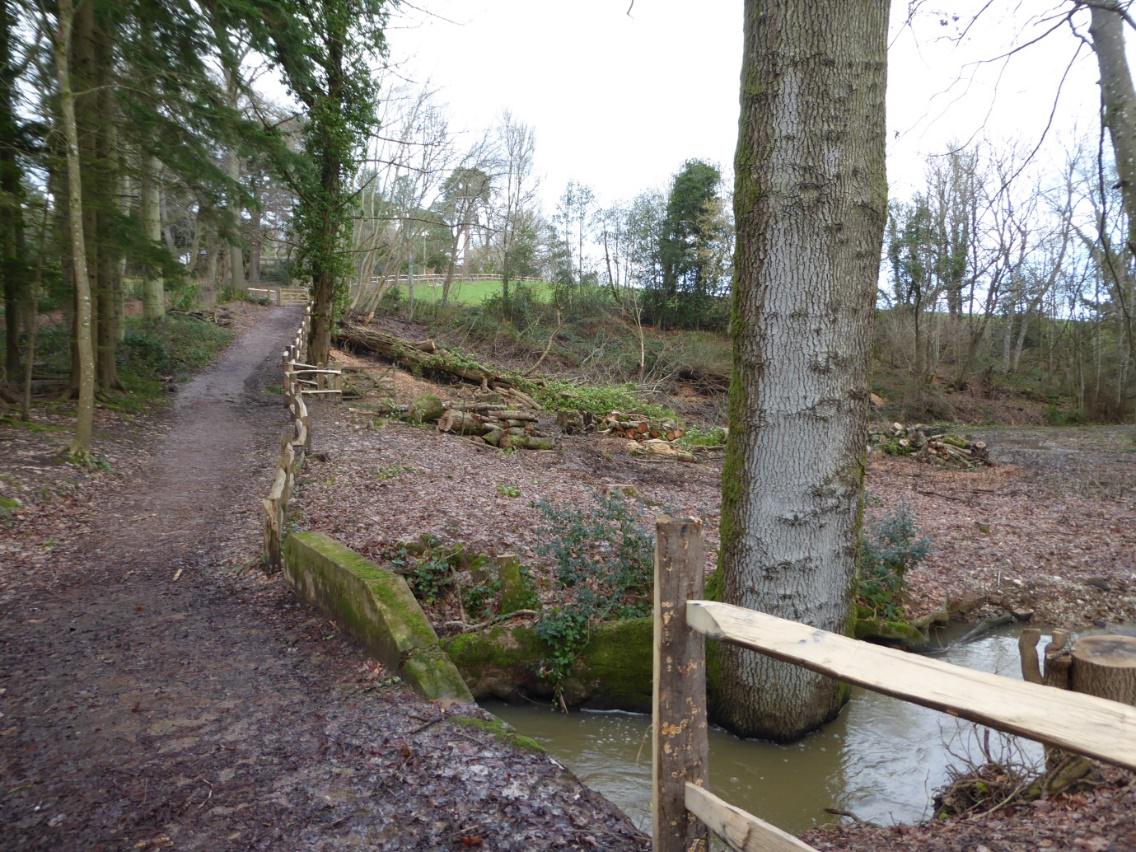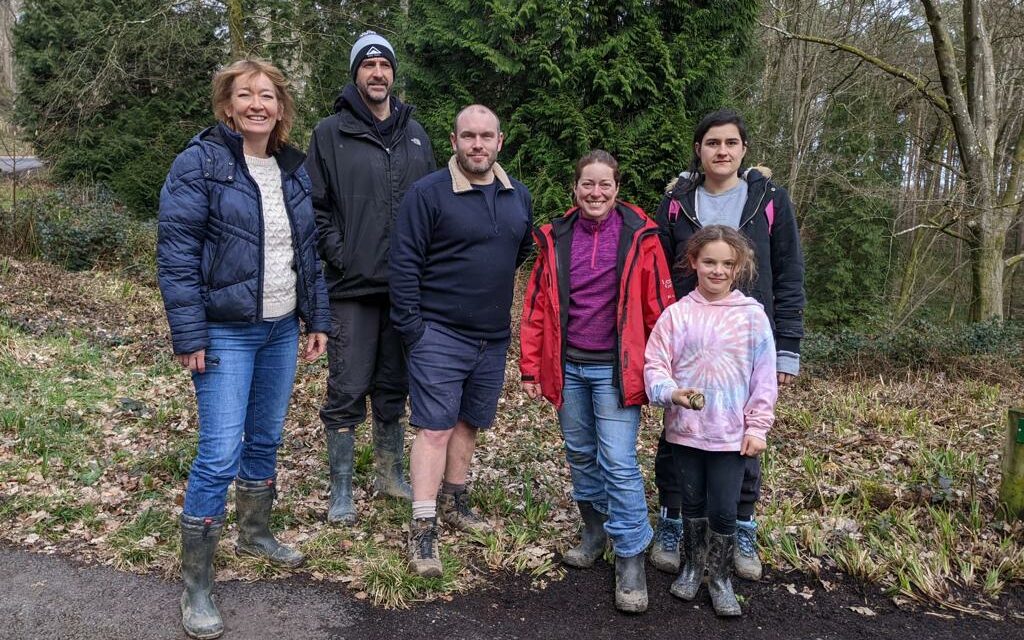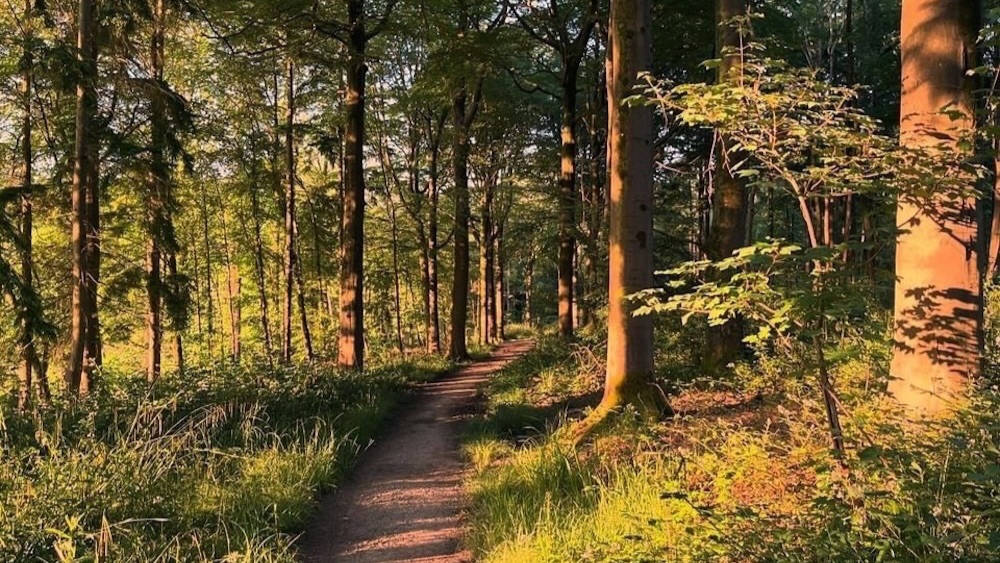Hello, I’m Nicci Trounson and very fortunately I live right on the edge of the Gravetye Estate in Sharpthorne. Since moving here 15 years ago we have walked almost daily around the estate. This has been a wonderful way of connecting with nature and provides a balance to my busy job and a commute on the M25 to a specialist school where I currently teach mindfulness and social/emotional literacy (to children aged 9-16).
I have trained professionally as a teacher for PAWS B (primary) and. B (secondary) which are ‘mindfulness in schools project’ (MISP) curriculums (see https://mindfulnessinschools.org.) I align with MISPs intention to: ‘empower educational staff, students, and the broader community to become leaders in bringing wellbeing to the heart of educational life, using mindfulness as a part of this process.’
During the challenges and tragedies of the pandemic, I posted daily on Facebook about our local ‘Lucky Walks’ in the estate and villages of Sharpthorne and West Hoathly featuring Lucky, our fluffy white dog. The posts were photos of ‘moments’ and ‘sights’ during the walks with a typed message above of related insightful quotes and comments. Friends and family really enjoyed this and it became a daily focus and anchor for my family and I whilst in Lockdown.
These walks and reflections led to some nurturing conversations with my teenage daughter as she navigated lockdown and home learning. During the walks and quiet moments in the forest (without Wi-Fi), we can find a nurturing connection to ourselves, nature and others.
I was posting on Facebook to hopefully offer something which brought support and comfort, not realising at the time that it would last for 100 days and this would then inspire a mindfulness book series project which I have been developing in the past year or so. The events, mindful moments and feelings of forest walking experiences lie within its foundation alongside progressive mindfulness teachings.
The whole experience brought us some fun, strength and hope, alongside a greater understanding and experience of the interconnectedness of life and how mindfulness in nature can improve our mental health. At whatever level someone appreciates or is able to access nature, I feel that it is important to encourage the experience and enjoyment of it. It is great to see what the William Robinson Gravetye Charity is beginning to achieve and I would encourage you to find out all about it and to get involved if possible. We need nature and nature needs us to care.
On a forest walk, we can take time to be aware of our surroundings and to be present in the moment. Though walking is a physical activity, it can become a mindful experience by focusing on breathing and what you can see, hear, touch, taste and smell in the natural world. The Scandinavians call their passion for nature friluftsliv (pronounced free-loofts-liv). The expression literally translates as “open-air living” and was popularised in the 1850s by the Norwegian playwright and poet, Henrik Ibsen, who used the term to describe the value of spending time in remote locations for spiritual and physical well-being. Solvitur ambulando is a Latin phrase that means ‘it is solved by walking’.
Humans evolved in nature as sensory beings. In ‘Last Child in the Woods’, Richard Louv describes the gap between children and nature as ‘nature deficit disorder’ linking the lack of nature in young people’s lives to the rise in mental health challenges and lack of vitamin D.
The benefits to the brain and body of movement and walking outdoors are well known (see ‘In Praise of Walking’ by neuroscientist Shane O’Mara). Ecotherapy is a healing approach through our attention to the rhythms and patterns of land, sea and sky. Looking often at fractals (patterns) in nature produces alpha waves which generate an alert but relaxed mood, similar to when people meditate. Beneficial hormones are increased and the stress hormone cortisol is decreased. Phytoncides (derived from plants) are organic compounds with benefits: they fight tumours and heal cells.
This all explains why we look to nature to unwind. Life can be challenging;
‘It’s not at all that mindfulness is the ‘answer’ to all life’s problems. Rather, it is that all life’s problems can be seen more clearly through the lens of a clear mind’
Jon Kabat-Zinn
The Institute for Outdoor Learning state ‘we have seen an exponential growth in outdoor therapeutic initiatives and programmes being developed and utilised for mental health and well-being effects’
A natural well-being practice of Forest Bathing, known originally in Japan as ‘Shinrin Yoku’ is a way of being calm and quiet amongst the trees, observing nature and being mindful. This started as an intuitive-based therapy and is now an evidence-based therapy.
In recent years therapeutic interventions within forests worldwide have begun, author Nadine Mazzola founded New England Nature & Forest Therapy Consulting (NENFT) in the U.S. which provides a variety of Forest Therapy programmes such as Shinrin Yoku “Forest Bathing” Walks. She wrote the first book of its kind, ‘Forest Bathing with our Dog’ in 2019’. There are many certified Forest Bathing Guides in the UK and worldwide.
The United Nations Framework Convention on Climate Change emphasizes the role of forests in helping achieve carbon neutrality. This is because forests become a source of greenhouse absorption if they are managed well, on the contrary, they become an emission source. ‘It means forests play a big role in order to adapt climate change and can reduce greenhouse gas emissions by preventing forest degradation, restoring devastated forest ecosystems, and managing sustainable forests.’
My potential books will hopefully support mindfulness and appreciation of the forest environment. The reader is invited to go on a walk with Mia (teenager) and Lucky (the dog) to experience the mindfulness ‘teachings’ progressively through the story series. Wonderful illustrations and key language will be incorporated. I am hoping to approach publishers after the Summer for help with the publication of the first book. This is a new area for me, a new terrain!
Here’s an extract of my writing, near the Lake:
Lucky pulled on his lead enjoying the new scents around the lakeside, his nose sniffing amongst the greenery and he found himself staring at a Robinsoniana, the special flower of the forest. This pale lavender-blue flower with its golden yellow centre had been seen by a man called William in a garden in London over 150 years ago! William excitedly planted it in this forest, hoping that it would spread and bloom all over.
‘Come and land on me’ the flowers call openly, beckoning with their colour, taste and scents to the pollinators ‘We can’t move so we need you to help us to reproduce’. The bees, insects and the butterflies respond and now the Robinsoniana can be seen in different areas of the forest estate.
Mia gently tucked on Lucky’s lead and stepped along the path ahead looking in the water at the floating water lilies, which were so impressed with their generous pinky-white flowers and large circular leaves floating on the water’s surface.
As she got to the wooden jetty she pulled her sit spot cushion out from her rucksack and placed it down to sit on, Lucky came to sit beside her and she hooked her arm around him, sliding her fingers into his soft fur. It had been a while since she had stopped at this sit spot.
‘Pausing to take in a beautiful sight
Is a great idea anytime day or night
Delights are all along the woodland trails
Go slow or you may miss the details
Stop and pause a while
To give yourself a mindful smile’
Enjoy this lovely forest estate if you can………..
Warm wishes, Nicci

